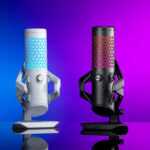To get things started, we look at the specifications of the camera. ASUS Zenfone 3 uses the Sony IMX298 sensor to capture photographs. It is a diagonal 6.521mm [Type 1/2.8 Sensor] 4608 x3456 16 Mega-pixel CMOS active pixel type stacked image sensor. It also adopts Sony Exmor RS technology to achieve high speed image capturing by column parallel analog-digital converter circuits processing to produce high sensitivity and low noise image.
What is Sony Exmor RS?
The Exmor RS is a Sony’s improved CMOS image sensor achieves high-resolution, high-performance and compact size by having a stacked sensor technology. With a higher density of sensors that processes analog to digital conversion, a overall more accurate image can be produced.

In addition the lens of the camera unit also contributes to its success. However, there are no information on ASUS Zenfone 3 lens make. Usually, competitors like Sony, will release full information about their lens type. For example, Sony Z and latest X series uses their own in-house G-Lens and Sensor.

An important feature of the Zenfone 3 cameras is its 4-axis optical image stabilization (OIS), 3-axis electronic image stabilization (EIS), laser auto-focus and phase detection AF (PDAF). It aims to reduce camera shakes, thus improving night shot quality with a longer exposed shutter speed.
- Four-axis photo OIS – PixelMaster 3.0’s optical image stabilization (OIS) system detects and eliminates shakes caused by hand movements by moving the sensor to compensate. This enables the photographer to use shutter speeds that are up to four stops slower, and results in sharper photos — especially in low-light environments.
- Three-axis video EIS – This electronic image stabilization (EIS) system automatically detects and corrects shaking motion in videos using an advanced software algorithm.
- PDAF function – The high speed auto focus technology.
This technology has the following merits compared with a conventional one (contrast AF).
Is OIS important?
Typically, if the angle of view is at 24mm and below, OIS is not that crucial as camera shake will not affect image quality too much. OIS is very important for angle of view above 50mm.
The wider the field of view, the less important OIS for the photo shot. However, it could be better to have OIS technology in scenarios where there is a need to capture photos with slow shutter speed and when in a dark location.
There are reasons for some manufacturer to skip on OIS. The inclusion of the technology will increase the overall cost of the camera. The size of the lens assembly will also be increase. This may affect the quality of the photo (e.g sharpness). Wide angle lens do not come with OIS technology, as these lens are not used for video shooting, which effects of OIS are most prominent.
The Full HD video below shows the (OIS) and (EIS) technology.
[evp_embed_video url=”http://asuswrt.net/V_20160809_201936_vHDR_Auto.mp4″]
Sony has introduced the new spatially multiplexed exposure technology, allowing more achievable high dynamic range still pictures and movie. This results in Zenfone 3 capabilities to to capture images with rich detail and sharp focus.
The IMX298 image system block diagram is shown below:

Other than Sony’s sensor technology, Snapdragon 625 dual camera image signal processors (ISPs) include superior 4K high-efficiency video coding recording and playback, even in low light conditions. It also supports dual high-resolution cameras, 16 megapixel photos, and up to 8 megapixel selfies, supporting higher-quality, low light snapshots and advanced post-processing features such as re-focus, advanced editing and special effects.
![]()
The Snapdragon 625 will debut with the new Qualcomm Spectra™ image signal processing (ISP) unit, designed to support superior DSLR-quality photography and enhanced computer vision.
The state of the art dual ISP design produces superior camera image quality and experiences. Qualcomm Spectra supports the latest sensors for a wider range of colors and more natural skin tones. Users can also expect better photos through the hybrid autofocus framework and multi-sensor fusion algorithms that support next generation computational photography.

Qualcomm Spectra ISP is Qualcomm Technologies’ most advanced dual-imaging signal processing unit to-date, integrated and designed to provide best-in-class camera image quality and end-user benefits, including:
- Superior image quality, with more natural skin tones via advanced, dual ISPs supporting up to 2 simultaneous cameras (e.g. one facing the user, and one rear facing), and up to 16 megapixels at 30 frames per-second with zero shutter lag;
- Improved photos with Qualcomm Spectra ISP’s flexible hybrid autofocus framework and multi-sensor fusion algorithms supporting next generation computational photography;
- Improved power efficiency when compared to previous generations, better noise immunity and higher throughput via advanced compression techniques and use of the latest MIPI serial C-PHY interface; and
- Next generation Computer Vision and other use cases via direct-to-DSP raw bayer data streaming and pre-processing capabilities.
Why is a bigger sensor is better?
With a larger image sensor, a larger surface area is used to capture light. This allows a higher density of data capture, thus allowing a clearer image. A larger surface area also means increased light sensitivity and better noise control at higher ISO. The inherent noise is therefore relatively lower compared when at higher voltage, thus increasing the signal-to-noise ratio (S/N).
Let us see which smartphone has the biggest sensor.
| Sensor | Smartphone | Resolution | Megapixels | Sensor Size |
| Sony IMX220 | Sony Xperia Z1 –Z4 | 5264 x 3960 | 20.7 | 1/2.3” |
| Sony IMX298 | Xiaomi Mi5 | 4608 x 3456 | 16 | 1/2.8” |
| Sony IMX286 | Huawei P9/ P9 PLUS | 3968 x 2976 | 12 | 1/2.9″ |
| Sony IMX300 | Sony Z5 & X Series | 5984 x 4140 | 25 | 1/2.3” |
| Sony IMX377 | Google Nexus 6P | 4032 x 3024 | 12.35 | 1/2.3” |
| Sony IMX260 | Samsung S7 | 4032 x 3024 | 12 | 1/2.5” |
| Sony IMX145-derived with PDAF | Apple iPhone 6 | 3264 x 2448 | 8 | 1/3” |
| Sony IMX315 | Apple iPhone 6s | 4224 x 3024 | 12.19 | 1/2.9” |
| Sony IMX298 | ASUS Zenfone 3 | 4608 x 3456 | 16 | 1/2.8” |
| Sony IMX318 | ASUS Zenfone 3 Deluxe | 5488 x 4112 | 22.5 | 1/2.6” |






Great post. I’m facing some of these issues as well..